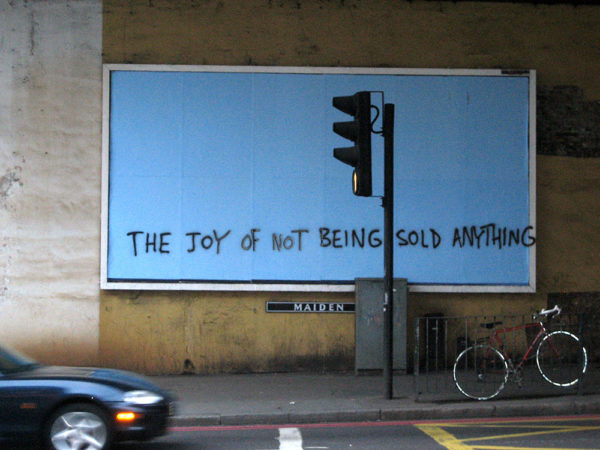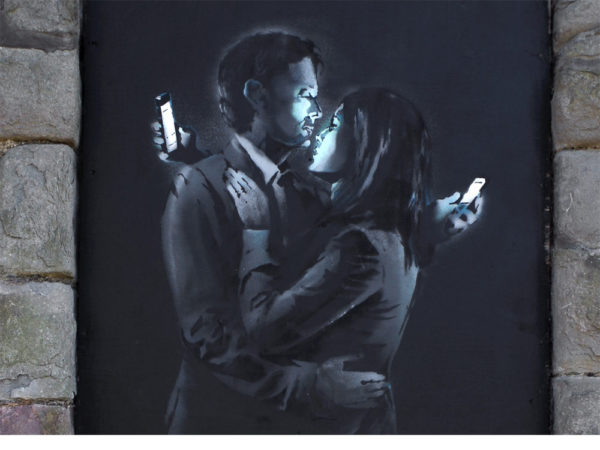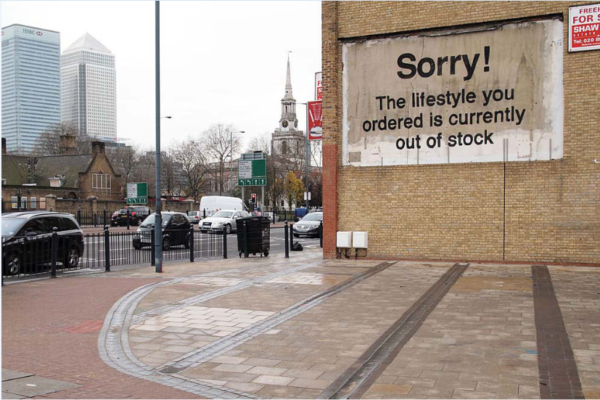You’re inundated with eighty million apps for everything. Each day, a new piece of connected tech hits the shelves. Companies are constantly telling you to buy this and that, but all you want to do is create great art.
I wouldn’t blame you if modern excess sparks a desire for minimalism.
Author Duane Elgin said,
“The intention of voluntary simplicity is not to dogmatically live with less. It’s a more demanding intention of living with balance. This is a middle way that moves between the extremes of poverty and indulgence.”

When you look at it in that light, minimalism for the artist makes a lot of sense. It’s not about dogma. You’re not living by a creed, and you don’t need to eschew everything and live the life of an ascetic. There are things you need, and there are things you don’t need. Particularly for the artist, this comes down to a question of technology.
[alert type=alert-white ]Please consider making a tax-deductible donation now so we can keep publishing strong creative voices.[/alert]
Everything the artist uses is a form of technology. Brushes, pens, pencils, paint, canvas, etc.—the visual artist employs these implements and other tools in order to create art. A computer or typewriter, pens, envelopes, etc.—the literary artist employs these. In the end and the beginning, what can you afford to have, what do you need, and what can you do without? Paring things down to what’s necessary leaves you in refreshingly clear space. All you have left, then, is the set of tools and accoutrements that are best for your purposes.
Getting around
Everyone needs to move. You need transportation to and from a job so you can afford to make art. And, you need transport to and from other cities and countries where your experiences give you material, where your exhibits or readings speak to your audience. Would anyone even know who Banksy is if he didn’t take his street art from city to city? Would Ai Weiwei be able to make powerful political statements (and a series of photos in which he flips off the Eiffel Tower, the White House, and Tiananmen Square) if he were cloistered in a country prone to censorship?
As a quick side-note, the irony behind #NoTech is intended. The artist who seeks to minimize the tech in her life must use tech to get her art out there.
You need transportation, and when it’s short distance, a bike or a ride-sharing service are good options. If you want to minimize, you must ask yourself whether you truly need your car. The answer entirely depends on the nature of your art. If you want to travel cross-country, documenting America and visiting even the smallest of towns, the ghost towns, the truck stops, the nature sites accessible only via one-lane dirt roads, you may choose to keep your car to make the journey easier than not. Or, as part of the experience, you could ditch the car and make a statement about how art will rise to the surface no matter the difficulty.
There are some great options if you decide to ditch the car:
– Turn it into art: here are 10 examples of street art cars, from the likes of Banksy and Etam Cru
– Sell or donate it: donating your car could help your favorite charity, or selling it could get you more money for your cause
– Turn it into furniture: office desks, couches, and beds are just a few of the possibilities
– Use tires to make garden pots
Turn your car into a keg-er-ator, a wall mount, a pool table, a bar, a bbq. You get the idea. What you decide to do with your car is limited only by the laws of physics, your imagination, and state and federal laws.
A material world
You need materials to work with, it’s as simple as that. But you may grow tired of using the same brushes, the same easel, the same paints all the time. Banksy’s medium is stencil, but he harnesses the vast canvas of the urban experience to comment on modern society. And he doesn’t limit himself. An exhibit in London titled “Turf War” featured a cow emblazoned with the image of Andy Warhol, and the image of Queen Elizabeth II on a chimpanzee.
You’re probably not planning on using barnyard animals anytime soon. You can narrow down your search and zone in on what you need by looking at reviews of arts and crafts materials. Curated lists of things like wood burning tools, calligraphy pens, copic markers, and palette knives give you a good idea of where to start when searching for materials with which to work.
Another method, of course, is to guess and check to determine the quality of your materials. This is time-consuming, and when you’re done you have a lot of things you don’t need. The markers you don’t like end up in the waste basket, or you take time to get them into someone else’s hands. That’s the opposite of minimalism.
Another option is to make a Zen Board (or buy a Buddha Board). This is the ultimate expression of minimalism. Instead of paint, you use water. Each stroke makes a temporary mark on the board. You create art that disappears, as short-lived as the fleeting moment. It’s a good way to practice, and it’s also a good way to keep from cluttering up the world, an immaterial take on art materials.
The internet
 You’re online now; safe to say you’re a convert. Banksy says,
You’re online now; safe to say you’re a convert. Banksy says,
“You don’t have to go to college, drag ’round a portfolio, mail off transparencies to snooty galleries or sleep with someone powerful, all you need now is a few ideas and a broadband connection. This is the first time the essentially bourgeois world of art has belonged to the people. We need to make it count.”
His last six words are key. The internet is a great place to network and get your art out there, and it’s a great place to learn. But we need to make it count. Online, there’s the temptation to consume tons of information, regardless of its relevancy to your art. Make it count. Delve into the spaces rich with resources and discussion and support, the forums, the blogs of artists who influence you.
This isn’t to say that a glut of random information and random images can’t be useful. Collage art or abstract art thrive on the entire spectrum, the bank of human expression. Minimalism just gently nudges you and says, make sure your time with technology serves your art, not the other way around.
All images courtesy of Banksy’s website. Click any image to see the site.
Save


